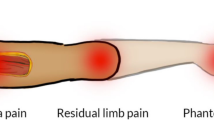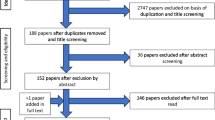Abstract
Background
Symptomatic neuroma occurs in 13% to 32% of amputees, causing pain and limiting or preventing the use of prosthetic devices. Targeted nerve implantation (TNI) is a procedure that seeks to prevent or treat neuroma-related pain in amputees by implanting the proximal amputated nerve stump onto a surgically denervated portion of a nearby muscle at a secondary motor point so that regenerating axons might arborize into the intramuscular motor nerve branches rather than form a neuroma. However, the efficacy of this approach has not been demonstrated.
Questions/purposes
We asked: Does TNI (1) prevent primary neuroma-related pain in the setting of acute traumatic amputation and (2) reduce established neuroma pain in upper- and lower-extremity amputees?
Methods
We retrospectively reviewed two groups of patients treated by one surgeon: (1) 12 patients who underwent primary TNI for neuroma prevention at the time of acute amputation and (2) 23 patients with established neuromas who underwent neuroma excision with secondary TNI. The primary outcome was the presence or absence of palpation-induced neuroma pain at last followup, based on a review of medical records. The patients presented here represent 71% of those who underwent primary TNI (12 of 17) and 79% of those who underwent neuroma excision with secondary TNI (23 of 29 patients) during the period in question; the others were lost to followup. Minimum followup was 8 months (mean, 22 months; range, 8–60 months) for the primary TNI group and 4 months (mean, 22 months; range, 4–72 months) for the secondary TNI group.
Results
At last followup, 11 of 12 patients (92%) after primary TNI and 20 of 23 patients (87%) after secondary TNI were free of palpation-induced neuroma pain.
Conclusions
TNI performed either primarily at the time of acute amputation or secondarily for the treatment of established symptomatic neuroma is associated with a low frequency of neuroma-related pain. By providing a distal target for regenerating axons, TNI may offer an effective strategy for the prevention and treatment of neuroma pain in amputees.
Level of Evidence
Level IV, therapeutic study. See Instructions for Authors for a complete description of levels of evidence.

Similar content being viewed by others
References
Ashley L, Stallings JO. End-to-side nerve flap for treatment of painful neuroma: a 15-year follow-up. J Am Osteopath Assoc. 1988;88:621–624.
Aszmann OC, Korak KJ, Rab M, Grünbeck M, Lassmann H, Frey M. Neuroma prevention by end-to-side neurorraphy: an experimental study in rats. J Hand Surg Am. 2003;28:1022–1028.
Balcin H, Erba P, Wettstein R, Schaefer DJ, Pierer G, Kalbermatten DF. A comparative study of two methods of surgical treatment for painful neuroma. J Bone Joint Surg Br. 2009;91:803–808.
Barberá J, Albert-Pampló R. Centrocentral anastomosis of the proximal nerve stump in the treatment of painful amputation neuromas of major nerves. J Neurosurg. 1993;79:331–334.
Belcher HJ, Pandya AN. Centro-central union for the prevention of neuroma formation after finger amputation. J Hand Surg Br. 2000;25:154–159.
Chabal C, Jacobson L, Russell LC, Burchiel KJ. Pain response to perineuromal injection of normal saline, epinephrine, and lidocaine in humans. Pain. 1992;49:9–12.
Chim H, Miller E, Gliniak C, Cohen ML, Guyuron B. The role of different methods of nerve ablation in prevention of neuroma. Plast Reconstr Surg. 2013;131:1004–1012.
Chiu DT, Smahel J, Chen L, Meyer V. Neurotropism revisited. Neurol Res. 2004;26:381–387.
Dellon AL, Mackinnon SE. Treatment of the painful neuroma by neuroma resection and muscle implantation. Plast Reconstr Surg. 1986;77:427–438.
Ducic I, Mesbahi AN, Attinger CE, Graw K. The role of peripheral nerve surgery in the treatment of chronic pain associated with amputation stumps. Plast Reconstr Surg. 2008;121:908–914; discussion 915–917.
Dumanian GA, Ko JH, O’Shaughnessy KD, Kim PS, Wilson CJ, Kuiken TA. Targeted reinnervation for transhumeral amputees: current surgical technique and update on results. Plast Reconstr Surg. 2009;124:863–869.
Ebrahimzadeh MH, Fattahi AS. Long-term clinical outcomes of Iranian veterans with unilateral transfemoral amputation. Disabil Rehabil. 2009;31:1873–1877.
Ebrahimzadeh MH, Hariri S. Long-term outcomes of unilateral transtibial amputations. Mil Med. 2009;174:593–597.
Elwakil TF, Elkharbotly AA. Role of Nd: YAG laser for prevention of neuroma formation: an in vivo experimental study. Lasers Med Sci. 2008;23:163–168.
Geraghty TJ, Jones LE. Painful neuromata following upper limb amputation. Prosthet Orthot Int. 1996;20:176–181.
Goldstein SA, Sturim HS. Intraosseous nerve transposition for treatment of painful neuromas. J Hand Surg Am. 1985;10:270–274.
González-Darder J, Barberá J, Abellán MJ, Mora A. Centrocentral anastomosis in the prevention and treatment of painful terminal neuroma: an experimental study in the rat. J Neurosurg. 1985;63:754–758.
Gorkisch K, Boese-Landgraf J, Vaubel E. Treatment and prevention of amputation neuromas in hand surgery. Plast Reconstr Surg. 1984;73:293–299.
Gruber H, Glodny B, Bodner G, Kopf H, Bendix N, Galiano K, Strasak A, Peer S. Practical experience with sonographically guided phenol instillation of stump neuroma: predictors of effects, success, and outcome. AJR Am J Roentgenol. 2008;190:1263–1269.
Hazari A, Elliot D. Treatment of end-neuromas, neuromas-in-continuity and scarred nerves of the digits by proximal relocation. J Hand Surg Br. 2004;29:338–350.
Herbert TJ, Filan SL. Vein implantation for treatment of painful cutaneous neuromas: a preliminary report. J Hand Surg Br. 1998;23:220–224.
Hijjawi JB, Kuiken TA, Lipschutz RD, Miller LA, Stubblefield KA, Dumanian GA. Improved myoelectric prosthesis control accomplished using multiple nerve transfers. Plast Reconstr Surg. 2006;118:1573–1578.
Hsu E, Cohen SP. Postamputation pain: epidemiology, mechanisms, and treatment. J Pain Res. 2013;6:121–136.
Ide C. Peripheral nerve regeneration. Neurosci Res. 1996;25:101–121.
Kesikburun S, Yaşar E, Dede I, Göktepe S, Tan AK. Ultrasound-guided steroid injection in the treatment of stump neuroma: pilot study. J Back Musculoskelet Rehabil. 2013 November 27 [Epub ahead of print].
Koch H, Haas F, Hubmer M, Rappl T, Scharnagl E. Treatment of painful neuroma by resection and nerve stump transplantation into a vein. Ann Plast Surg. 2003;51:45–50.
Kuiken TA, Dumanian GA, Lipschutz RD, Miller LA, Stubblefield KA. The use of targeted muscle reinnervation for improved myoelectric prosthesis control in a bilateral shoulder disarticulation amputee. Prosthet Orthot Int. 2004;28:245–253.
Kuiken TA, Li G, Lock BA, Lipschutz RD, Miller LA, Stubblefield KA, Englehart KB. Targeted muscle reinnervation for real-time myoelectric control of multifunction artificial arms. JAMA. 2009;301:619–628.
Kuiken TA, Miller LA, Lipschutz RD, Lock BA, Stubblefield K, Marasco PD, Zhou P, Dumanian GA. Targeted reinnervation for enhanced prosthetic arm function in a woman with a proximal amputation: a case study. Lancet. 2007;369:371–380.
Mackinnon SE, Dellon AL, Hudson AR, Hunter DA. Alteration of neuroma formation by manipulation of its microenvironment. Plast Reconstr Surg. 1985;76:345–353.
Marcol W, Larysz-Brysz M, Kucharska M, Niekraszewicz A, Slusarczyk W, Kotulska K, Wlaszczuk P, Wlaszczuk A, Jedrzejowska-Szypulka H, Lewin-Kowalik J. Reduction of post-traumatic neuroma and epineural scar formation in rat sciatic nerve by application of microcrystallic chitosan. Microsurgery. 2011;31:642–649.
Martini A, Fromm B. A new operation for the prevention and treatment of amputation neuromas. J Bone Joint Surg Br. 1989;71:379–382.
Mass DP, Ciano MC, Tortosa R, Newmeyer WL, Kilgore ES. Treatment of painful hand neuromas by their transfer into bone. Plast Reconstr Surg. 1984;74:182–185.
Mobbs RJ, Vonau M, Blum P. Treatment of painful peripheral neuroma by vein implantation. J Clin Neurosci. 2003;10:338–339.
Muehleman C, Rahimi F. Effectiveness of an epineurial barrier in reducing axonal regeneration and neuroma formation in the rat. J Foot Surg. 1990;29:260–264.32.
Nelson AW. The painful neuroma: the regenerating axon verus the epineural sheath. J Surg Res. 1977;23:215–221.
O’Shaughnessy KD, Dumanian GA, Lipschutz RD, Miller LA, Stubblefield K, Kuiken TA. Targeted reinnervation to improve prosthesis control in transhumeral amputees: a report of three cases. J Bone Joint Surg Am. 2008;90:393–400.
Politis MJ, Ederle K, Spencer PS. Tropism in nerve regeneration in vivo: attraction of regenerating axons by diffusible factors derived from cells in distal nerve stumps of transected peripheral nerves. Brain Res. 1982;253:1–12.
Restrepo-Garces CE, Marinov A, McHardy P, Faclier G, Avila A. Pulsed radiofrequency under ultrasound guidance for persistent stump-neuroma pain. Pain Pract. 2011;11:98–102.
Robbins TH. Nerve capping in the treatment of troublesome terminal neuromata. Br J Plast Surg. 1986;39:239–240.
Sakai Y, Ochi M, Uchio Y, Ryoke K, Yamamoto S. Prevention and treatment of amputation neuroma by an atelocollagen tube in rat sciatic nerves. J Biomed Mater Res Part B Appl. Biomater. 2005;73:355–360.
Soroush M, Modirian E, Soroush M, Masoumi M. Neuroma in bilateral upper limb amputation. Orthopedics. 2008;31. pii: orthosupersite.com/view.asp?rID=32929.
Swanson AB, Boeve NR, Lumsden RM. The prevention and treatment of amputation neuromata by silicone capping. J Hand Surg Am. 1977;2:70–78.
Tamimi MA, McCeney MH, Krutsch J. A case series of pulsed radiofrequency treatment of myofascial trigger points and scar neuromas. Pain Med. 2009;10:1140–1143.
Tyner TR, Parks N, Faria S, Simons M, Stapp B, Curtis B, Sian K, Yamaguchi KT. Effects of collagen nerve guide on neuroma formation and neuropathic pain in a rat model. Am J Surg. 2007;193:e1–e6.
Wood VE, Mudge MK. Treatment of neuromas about a major amputation stump. J Hand Surg Am. 1987;12:302–306.
Yüksel F, Kişlaoğlu E, Durak N, Uçar C, Karacaoğlu E. Prevention of painful neuromas by epineural ligatures, flaps and grafts. Br J Plast Surg. 1997;50:182–185.
Zeltser R, Beilin B, Zaslansky R, Seltzer Z. Comparison of autotomy behavior induced in rats by various clinically-used neurectomy methods. Pain. 2000;89:19–24.
Ziegler-Graham K, MacKenzie EJ, Ephraim PL, Travison TG, Brookmeyer R. Estimating the prevalence of limb loss in the United States: 2005 to 2050. Arch Phys Med Rehabil. 2008;89:422–429.
Author information
Authors and Affiliations
Corresponding author
Additional information
Each author certifies that he or she, or a member of his or her immediate family, has no commercial associations (eg, consultancies, stock ownership, equity interest, patent/licensing arrangements, etc) that might pose a conflict of interest in connection with the submitted article.
All ICMJE Conflict of Interest Forms for authors and Clinical Orthopaedics and Related Research ® editors and board members are on file with the publication and can be viewed on request.
Each author certifies that his or her institution approved the human protocol for this investigation, that all investigations were conducted in conformity with ethical principles of research, and that informed consent for participation in the study was obtained.
About this article
Cite this article
Pet, M.A., Ko, J.H., Friedly, J.L. et al. Does Targeted Nerve Implantation Reduce Neuroma Pain in Amputees?. Clin Orthop Relat Res 472, 2991–3001 (2014). https://doi.org/10.1007/s11999-014-3602-1
Published:
Issue Date:
DOI: https://doi.org/10.1007/s11999-014-3602-1




